AI agents really need blockchain?
Written by: Thomas
Compiled by: Deep Tide TechFlow
People seem to be very optimistic about Autonolas, why? Just because it's an "AI" project?
Or is it because AI services will change our lives, and Autonolas ensures that "we" control the AI services built on and off the chain? After several days of research, I have a certain understanding of this project.

To understand Autonolas, we need to understand the vision of its CEO David: he recognizes the unlimited potential of AI services, but also the threats. AI services will free people from daily cognitive labor and force them to seek new and meaningful work.
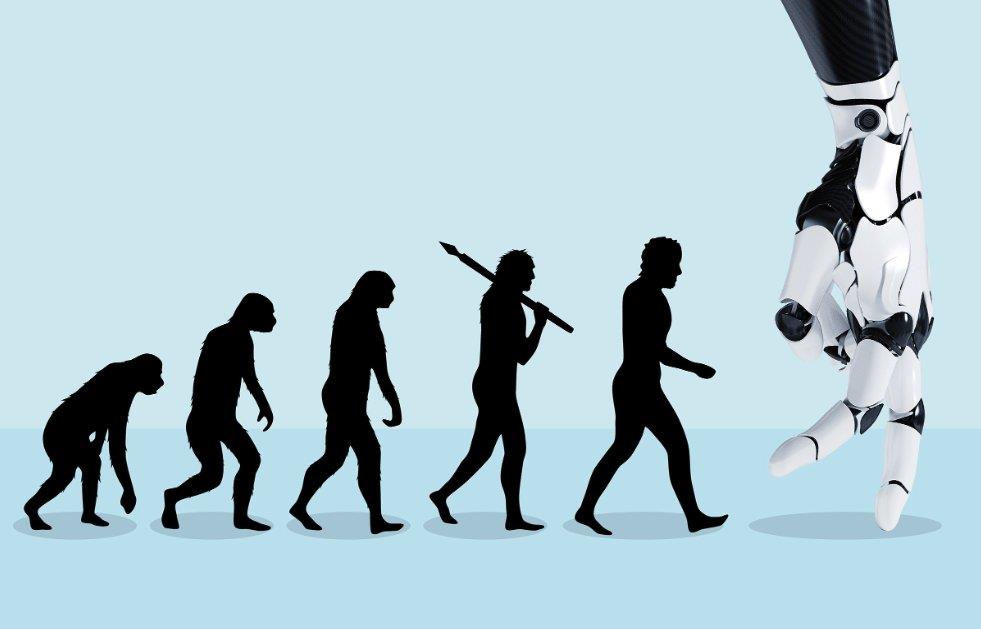
However, the value created by these new AI fleets will be huge, and any single entity will find it difficult to manage without causing systemic risks to social balance. If an entity can control the deployment of content and purpose, an Orwellian scenario could quickly occur.
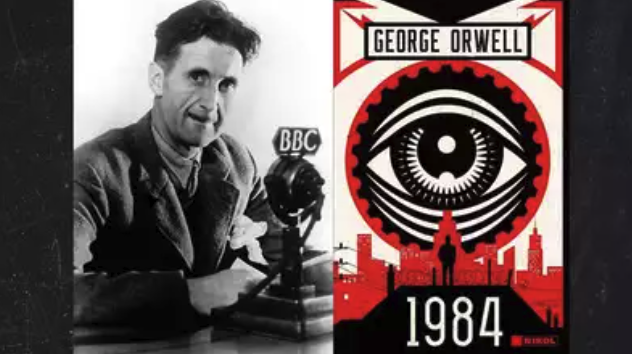
David's solution: collectively owned AI.
So, you mean like DAO?
Kind of. They are similar. Collective operation, decentralized development, and their governance achieves democratization.
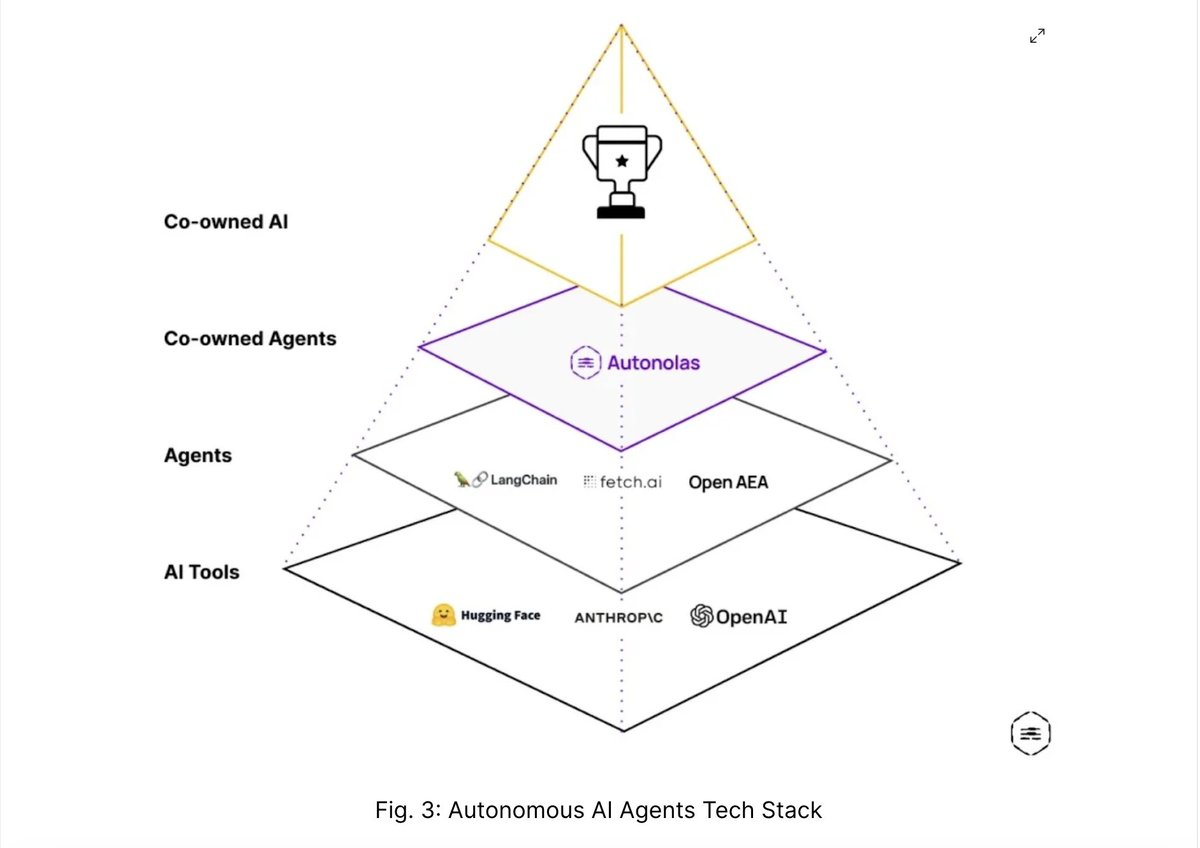
However, in their current form, DAOs are not autonomous. Nor are they decentralized.
Why?
Because DAOs rely on smart contracts, and smart contracts rely on transactions to function.
Even if smart contracts represent AI agents, you still need entities (i.e., people) to sign transactions on the blockchain.

Smart contracts are very suitable for simple transactional tasks. However, they cannot: do things that require expensive processing; run continuously; interact with the off-chain world.
In addition, encryption protocols mainly do two things:
Implement their own chains to solve problems of other chains
Add functionality to the chain (such as DEX).
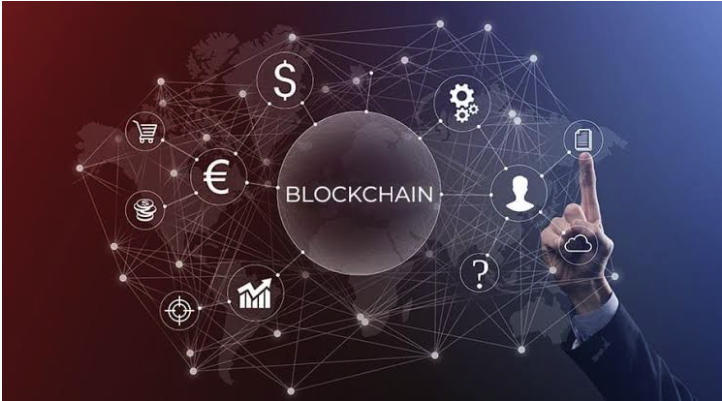
Both of these approaches leave a large gap for the technology that connects the on-chain and off-chain worlds, and this is where $OLAS comes in.

The goal of the $OLAS protocol is to unleash the potential of off-chain services (autonomous services that run off-chain but interact on and off-chain without restrictions). These autonomous services are AI agent groups, which form a network to create (autonomous) services. They: run continuously, take autonomous action, interact with the world outside the blockchain, and run complex logic.
It should be clear that they do not need us to operate. This was not possible before Autonolas.
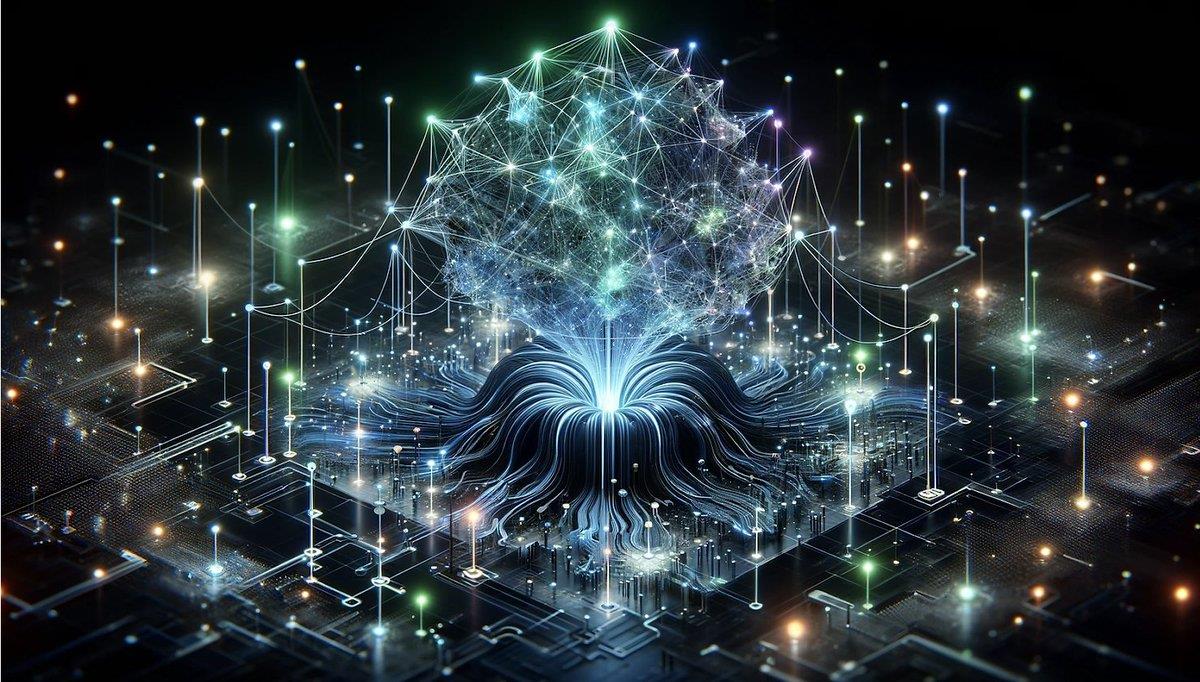
By the way, you might be wondering: What is an AI agent? Here is the definition:
"An artificial intelligence that acts intelligently, perceiving the environment and taking autonomous action to achieve goals."
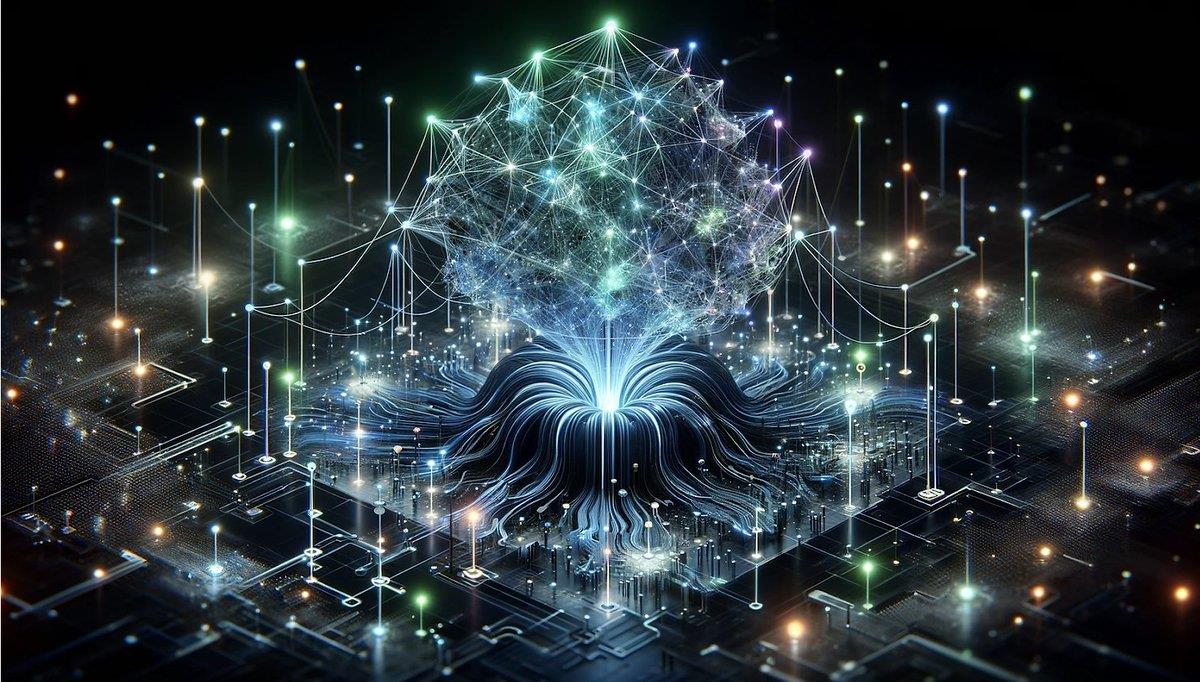
Back to Autonolas. The Autonolas technology stack includes:
Autonomous services (as described above).
Composable autonomous applications.
On-chain protocols that protect agent services and incentivize development.
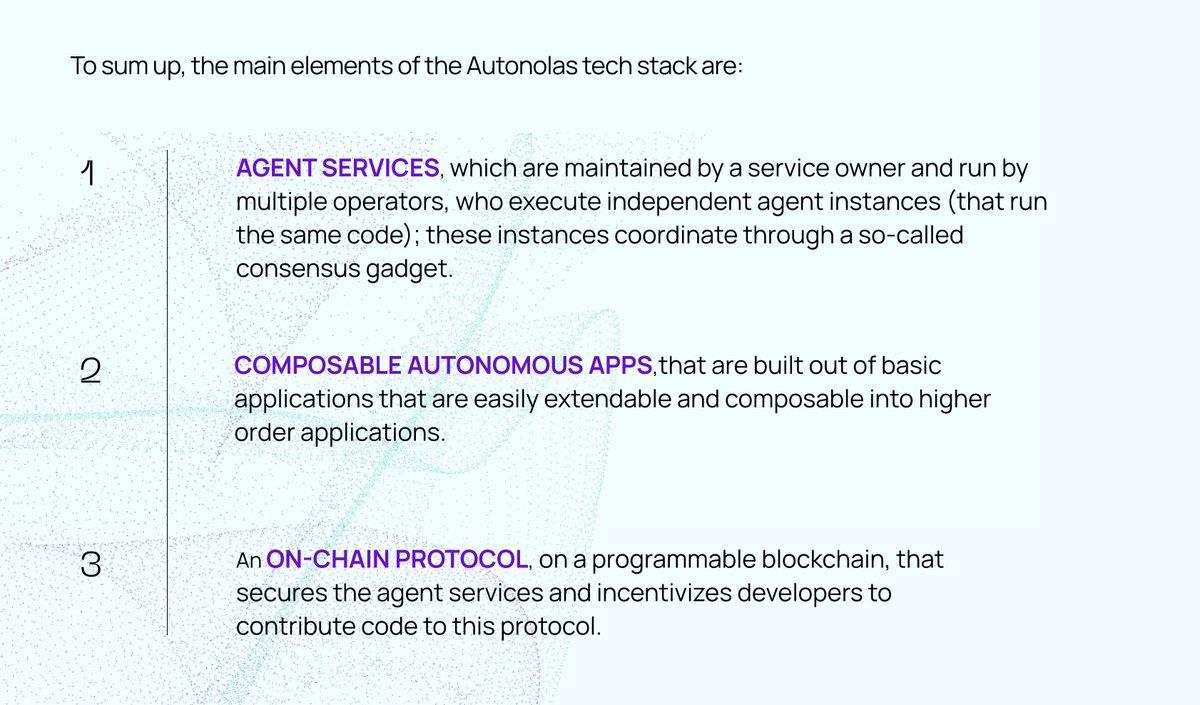
Let's discuss them one by one.
Agent Services
The AI agents that make up these services can extract data from any AI model in the world. Each GPT, LMM, or subnet is included (yes, including $TAO). Through service coordination, specific models are assigned to certain agents.
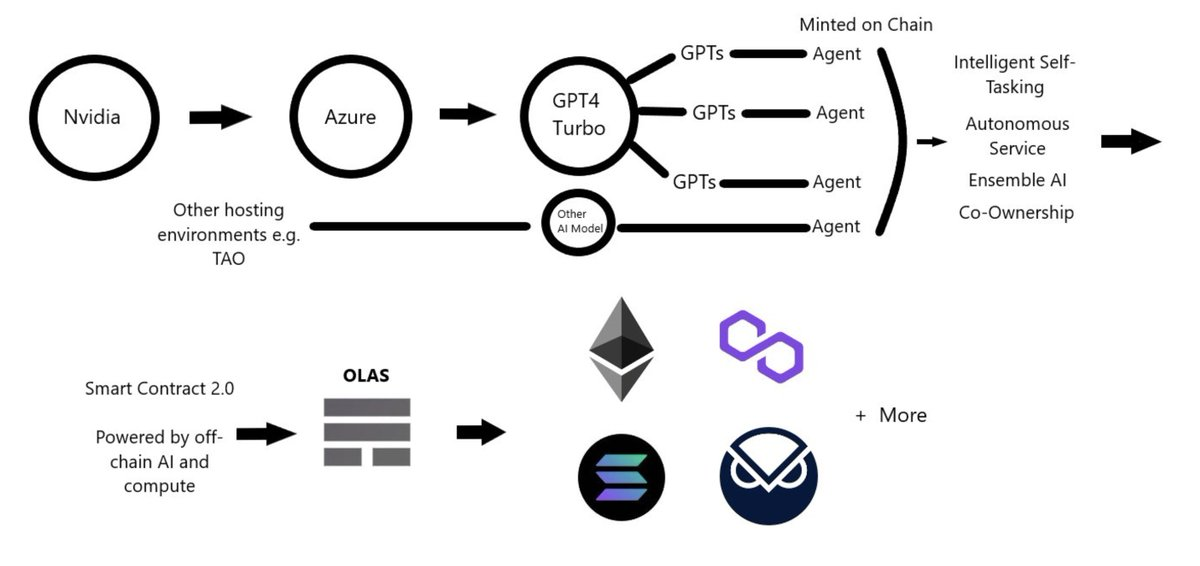
The choice depends on several factors, such as economic feasibility, availability, and performance. Each agent can use different data sources (more decentralized). In some cases, the knowledge graph is even distributed through Origin Trail or through GraphQL.
Agents can be used to perform many Web3 tasks:
1) Oracle - can use agents to provide accurate data to smart contracts.
2) Autonomous Guardian Services (AKS) - adds off-chain computation and reasoning to DeFi.
3) Through ACN, AI agents can work on team communication.

Composable Autonomous Applications
The technology stack is built to encourage composability.
Programmers can build basic applications that can be used as building blocks for more complex AI agents. All open source.
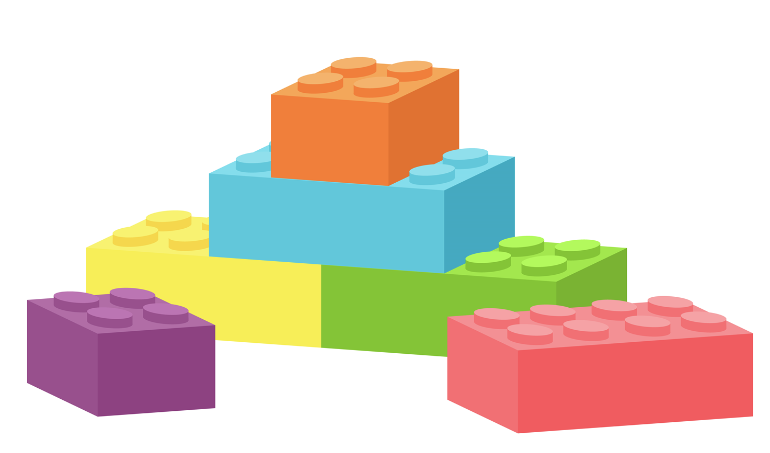
On-chain Protocols
Autonolas has established an on-chain protocol (a set of smart contracts) that functions like an app store: it allows developers to register and monetize their services. It allows these services to interact economically and have rules determined by member voting.
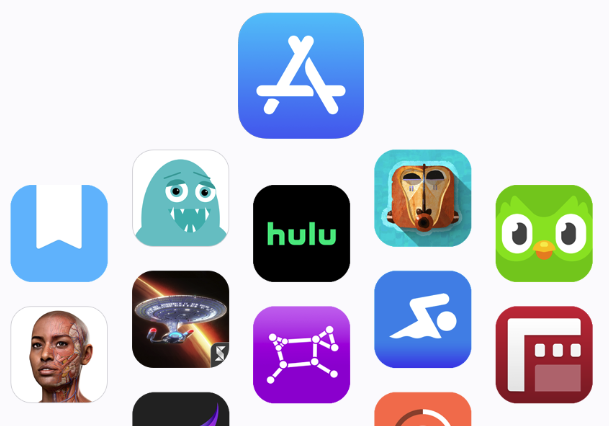
Importantly, although primarily focused on DAOs, these services can also be deployed in the "real" world. Imagine a planting station using IoT sensors or AI agents using data to trigger watering operations.
Back to DAOs. DAOs have internal operations (e.g., payroll, governance) and service delivery (e.g., yield aggregator).
AI agents can do all of these things better, faster, and more autonomously.
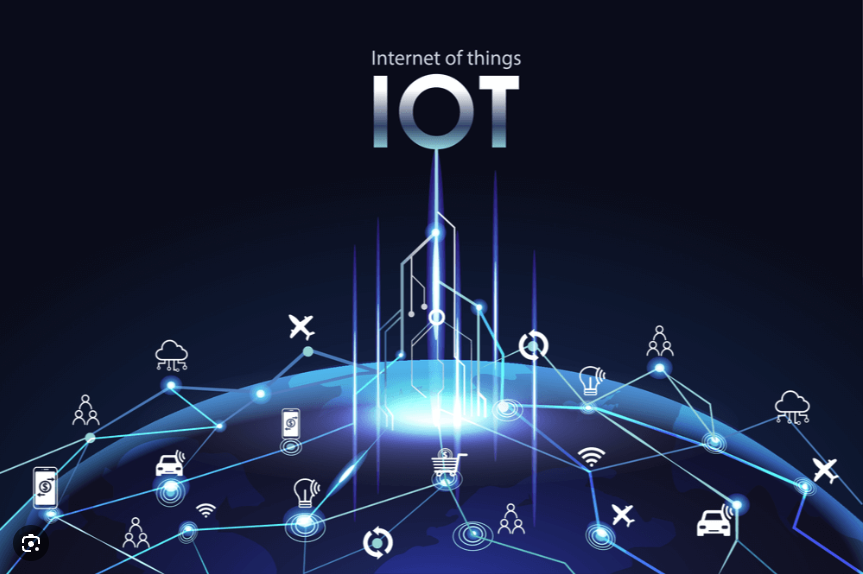
What other types of services can artificial intelligence agents improve?
Managing liquidity pools
Prediction markets
Asset acquisition
Oracles and cross-chain bridges.
By utilizing AI, Autonolas allows the creation of services that fundamentally improve performance.

Let's take prediction markets as an example.
With Autonolas, you can create AI agents to improve your odds by scanning entities using GPT4 for predictions. There are already AI agents with an 88% win rate, and these AI agents continue to improve…
Future use cases:
Using Autonolas, an insurance service is created for farmers
A group of people start running AI agents that execute the logic
Farmers register for the service and pay an annual fee
Due to seasonal losses, the farmer requests a payout
Each agent on the network retrieves climate data from different AI models trained by professionals
Agents share data, verify, and vote to reach consensus, using ACN and MAS
Payout is made if the request aligns with the data
This use case demonstrates the uniqueness of Autonolas.
Open autonomy is a new standardized framework for creating autonomous services. This enables blockchain and decentralized agent services to work together as a multi-agent system (MAS).
Interesting fact: CEO David created the first open-source, crypto-friendly MAS network called the open-aea framework. This framework allows AI agents to communicate, interact, and implement business logic with blockchain and smart contracts.
Agent communication is achieved through the message-based agent communication network (ACN), with the goal always being a wallet address. This process is implemented by connecting temporary blockchains with consensus gadgets (CG). Currently, tendermint nodes are used as CG.

Finally, Autonolas achieves Ensemble AI and networked AI.
Ensemble AI: Within a service, each node can run its own AI (LLM, etc.). Each service can consist of many AI models. They can communicate and reach consensus through their combined intelligence.
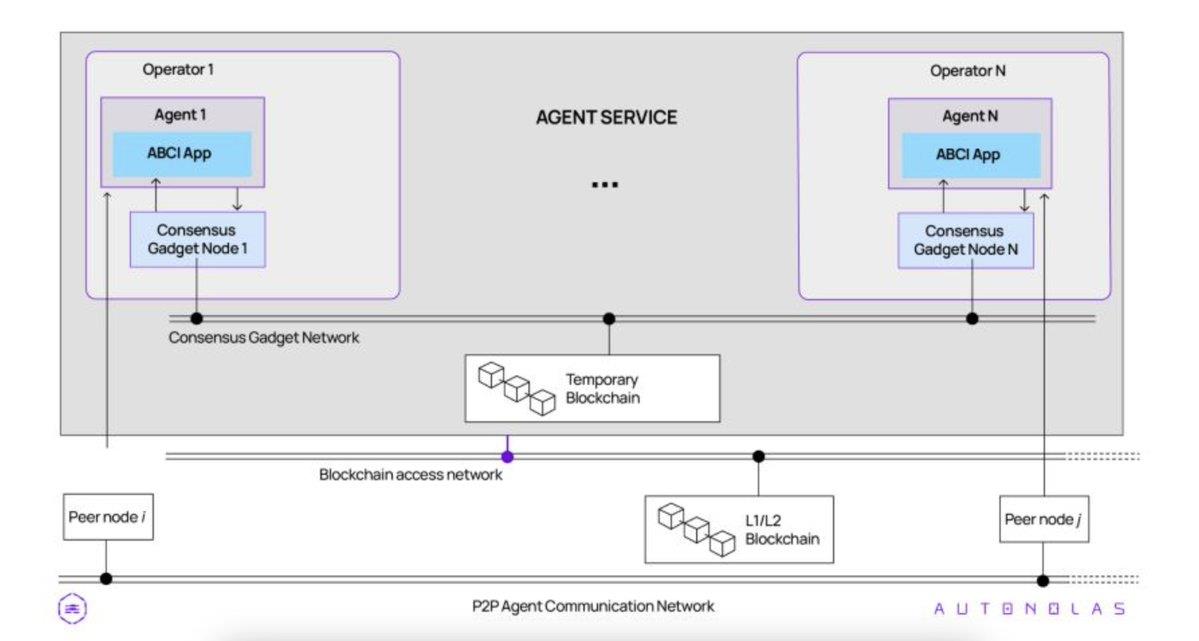
Networked AI: Services themselves can use each other's services (i.e., leverage each other's intelligence). This opens the door for collaboration and standardization.
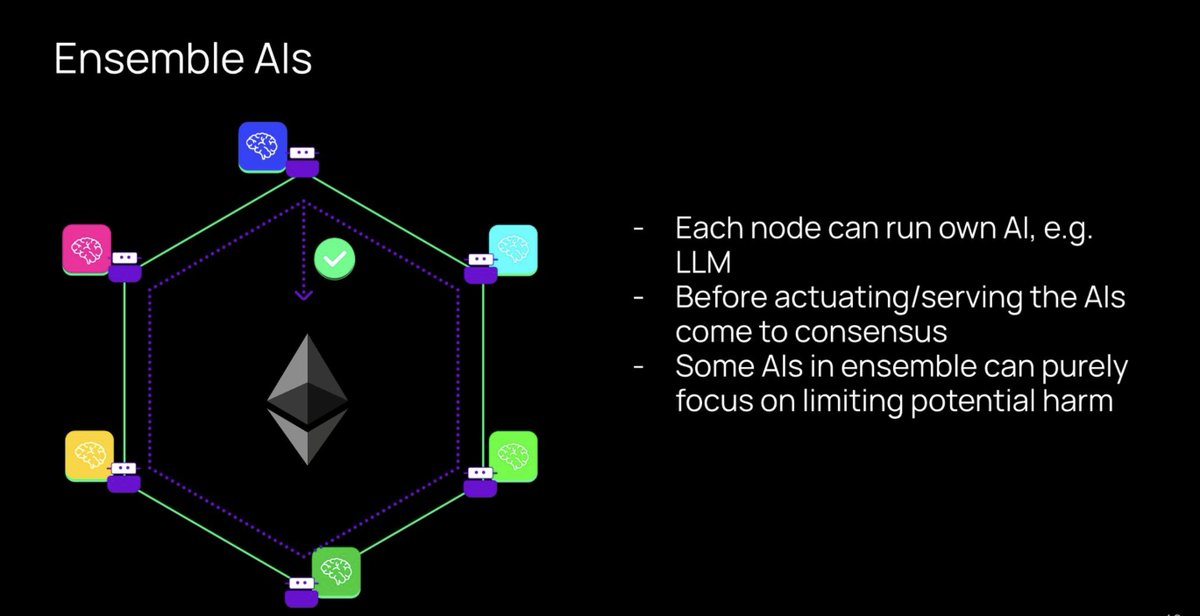
But you might ask, does AI agents really need blockchain?
Well, yes.
Why?
Because it allows for the scalability of agent services. Centralized AI agents with bank storage allowances cannot scale in a scalable manner. Not to mention the resulting currency censorship.
Therefore, smart contracts are necessary to abstract business logic and eliminate the need for human supervision. With the open-area framework and AI agents having their own safe and public addresses, the scalability of AI agents is possible. Also: no currency censorship!
Adoption
The number of transactions made by AI agents currently exceeds 200,000.
Next, use cases include:
▶️ Prediction market agents (Omen Prediction Markets)
▶️ Smart funds (Balancer)
▶️ Wallet management (Safe)
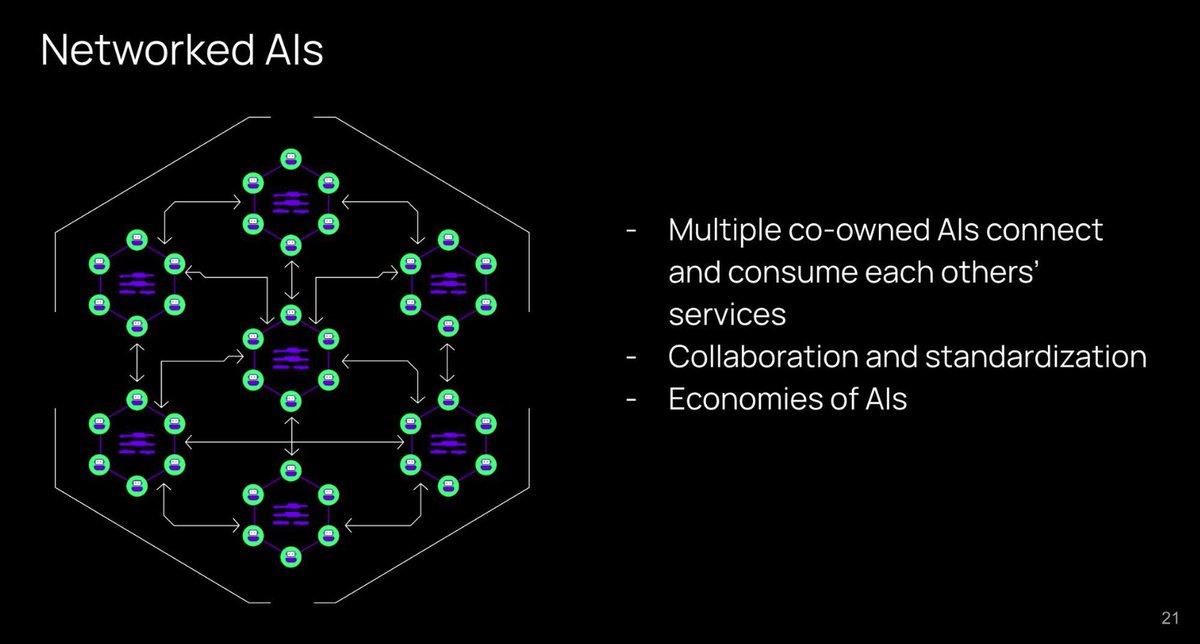
Team
CEO David Minarsch is a Cambridge graduate with a Ph.D., and he established the AI agent department at Fetch.ai. At Valory, the company behind $OLAS, there are currently 16 employees.
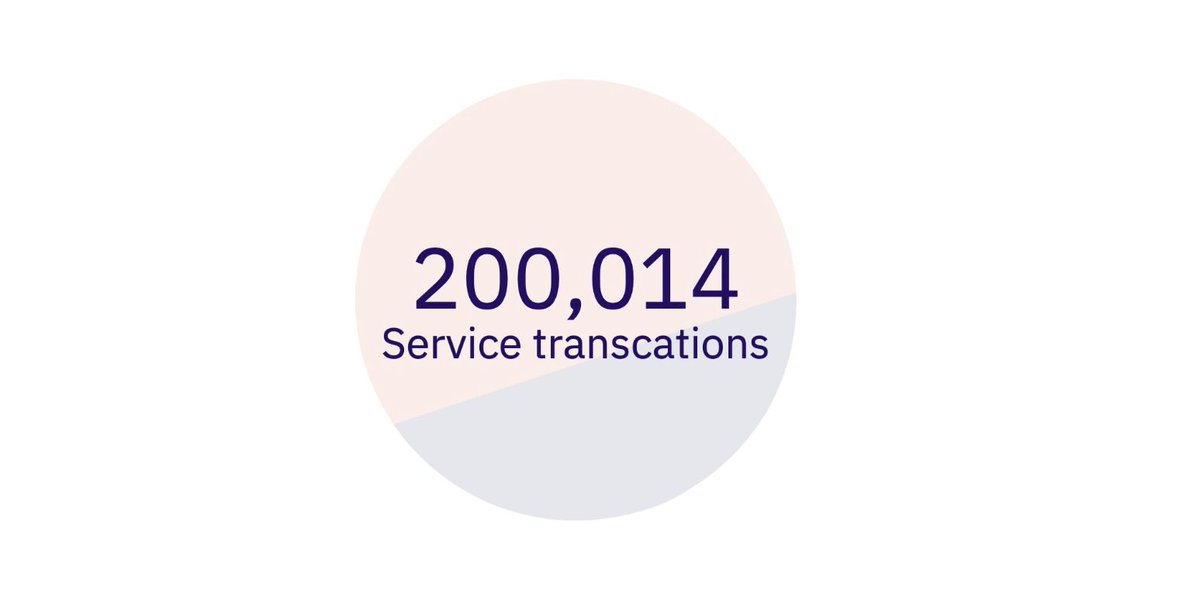
Tokenomics
The token economy is complex and innovative. The CEO has a background in game theory; the token economic design reflects this.
The technology is open source and requires developers. However, developers are scarce.
Therefore, Autonolas has created a flywheel to attract them.
First, let's explain this flywheel, designed to incentivize developers to create useful code.
Developers create code and register it as an NFT (DAO decides if the code passes), and then this code can be used as a Lego block in autonomous services.

Services receive donations when used. Due to NFTs, rewards can be traced back to the developer who created it and distributed through (code, capital).
These emissions account for 10% of all inflation that Autonolas will release.
Another goal of Autonolas is to pair code with capital.
They achieve this by growing capital in the form of Protocol-Owned Liquidity through a bond mechanism.
$OLAS holders can provide liquidity on dex and stake these LP tokens at a discounted $OLAS.
The discount is determined by the difference between the market value of the permanently staked asset and the current market value of the LP. If the asset price collapses, the bond interest rate will turn negative, artificially reducing inflation.
The flow of the entire fund is as follows:
Autonomous services are minted --> Funds are added by service users --> Donations from veOLAS holders to services --> Rewards for useful code contributions --> Developers continue to develop new code.
The three main sources of income for Autonolas are:
Profits from protocol-owned services: donations
Protocol-owned liquidity: all profits go into the DAO treasury.
Voluntary donations for third-party services.
$OLAS Token Utility
DAO governance. Typically, this utility is not great. But in Autonolas, it is crucial for deciding which AI to build.
Can be staked for whitelist access and additional incentive rewards
Purchase LP tokens for bonds.
All three support the long-term growth of $OLAS.
In the token allocation, the percentage allocated to the team is high. However, the team has locked it until 2026. Also, the team is not a VC and will not eagerly wait for the unlock to sell to investors.
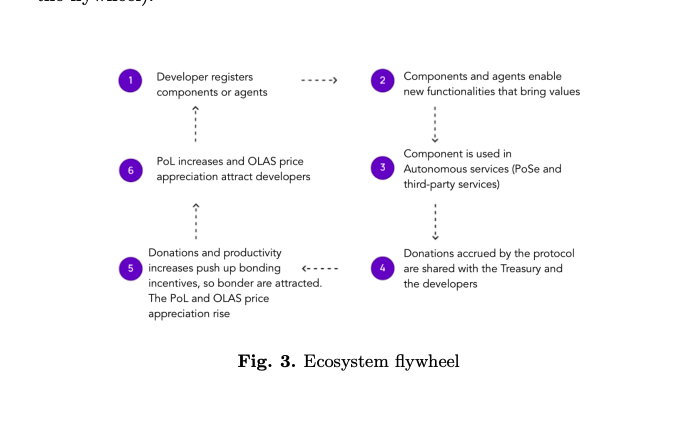
Roadmap
Autonolas is currently focused on:
Build-A-PoSe: allowing the creation of protocol-owned services
Triple Lock: protocol upgrades to improve bonds, developer rewards, and staking.
Expanding the network through AIP 1
Ecosystem partner network.
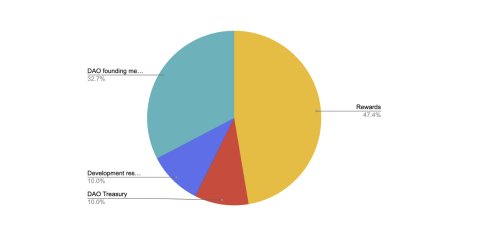
免责声明:本文章仅代表作者个人观点,不代表本平台的立场和观点。本文章仅供信息分享,不构成对任何人的任何投资建议。用户与作者之间的任何争议,与本平台无关。如网页中刊载的文章或图片涉及侵权,请提供相关的权利证明和身份证明发送邮件到support@aicoin.com,本平台相关工作人员将会进行核查。




